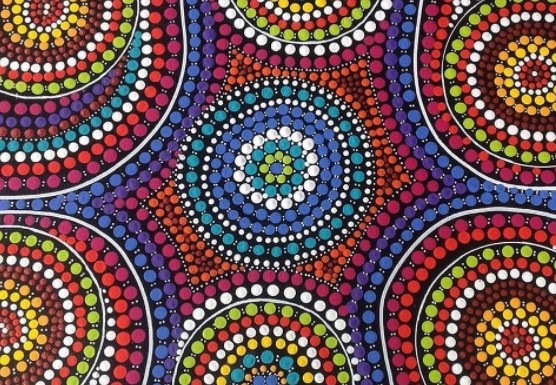Aboriginal art is one of the oldest forms of artistic expression worldwide. Art carvings from Arnhem Land is known to date back at least 60,000 years ago! Artists would use soil and rocks to create carvings, paintings, and ground designs, and it’s got a vast history.
Before you head to an Aboriginal paintings gallery, it’s best to know more about the history and facts about this form of art to appreciate it better. That said, check out these interesting facts about Aboriginal Art!

- Only Aboriginal Artists Can Create the Art
This is an obvious fact, as Aboriginal art is only considered as such if painted by an artist from that origin. Non-indigenous Australians don’t have the authority to paint Aboriginal art.
The painting’s look is dictated by where the artist is from. Because non-indigenous artists aren’t from particular tribes, they aren’t able to represent forms of Aboriginal art.
That said, other ethnicities aren’t banned to create artwork. If you would like to learn more about Aboriginal art and how to do the art form, there are a lot of workshops you can join.
- Dots Would Hide Meaning from White Australians
Dot painting actually originated during the time white settlement came along, as they feared that non-indigenous people would know about the secret knowledge Aboriginals held.
While double-dotting didn’t seem like it meant anything, Aboriginals could discern the meaning behind them. Today, it is a popular style technique that tribes still use today, particularly from the Pintupi, a Western Australian tribe.
- Small Dots Doesn’t Mean It’s Aboriginal Art
Aboriginal art is a whole other education, as there is so much that needs to be learned before one engages with Aboriginal art.
Australians and travelers might think that Aboriginal art is merely dots and lines. However, this is NOT true!
Aboriginal artists from certain tribes are allowed to use the dot art technique. As mentioned, the technique that can be used would depend on where the artist is from, their tribe, and culture. It would be disrespectful and unacceptable to paint using techniques from another culture.
- Painting Stories
Just like other forms of artwork around the world, Aboriginal artwork would tell a story. Most artworks tell the story of the artist’s individual journey, which can be about their family, daily life, warriors from the past, among others. Sometimes, their art would be reflective of their tribe, and in rarer situations, about their stolen generation and the heartache, it brings.
Speaking of painting stories, Aboriginal artists aren’t allowed to paint stories that aren’t from their lineage. If ever they would like to paint stories about historical and/or sacred information, they need to secure permission before doing so. Artists should stick to the stories and art techniques from their tribe.
- Aboriginals Had NO Written Language
There are Aboriginal artworks speaking in the English language, having words and phrases related to the stolen generation and white settlement. This is because Aboriginals have no formal written language.
Art is central to the Aboriginal culture as it tells visual stories. Without any words for communication, visuals and pictures would take place. Aboriginal languages in the spoken form aren’t around as it was before as well.
Each tribe would have a different dialect, with every artist having their own story. There are actually around 500 Aboriginal languages, so there are no two similar Aboriginal artworks. Just like dialects, there are just as many, if not more, varieties of art techniques, which are reflections of individual artists.
- It Isn’t Just Paintings
While most of the Aboriginal arts would take the form of paintings, there are actually a lot more artworks that are created through other media. For instance, there are monoprints, or even burning symbols on wood. There are also weaponry, plates, and boomerangs created as Aboriginal art.
- The Meaning and Symbols
Aboriginal art is a type of visual storytelling, so it’s no surprise that every tribe has its own symbols relating to particular meanings. Such symbols are iconic, relevant to various tribes. Some of these symbols would include digging sticks, eagle feet, waterholes, and more.
Colors may also have meaning, though this is rare, and only a few tribes understand what colors would relate to certain meanings.
Wrapping It Up
There is so much to learn about Aboriginal Art, it’s best that you start from the history and learn more about them while delving into their works. This will allow you to appreciate their artwork better and raise awareness about the Aboriginals in the area.
Hopefully, you learned a lot about Aboriginal art and some of the history behind these facts. Continue learning more about them and the arts to keep their culture strong!
Do you have questions or want to share your own knowledge about Aboriginal art? Do share them in the comments section, we appreciate all of your insights.
I’m a 20-something stay-at-home mother and wife. I have an amazing husband, a beautiful daughter, two loving dogs, and a lazy cat. I wouldn’t change my life for anything! I love to read, listen to music, cook and blog!

Speak Your Mind